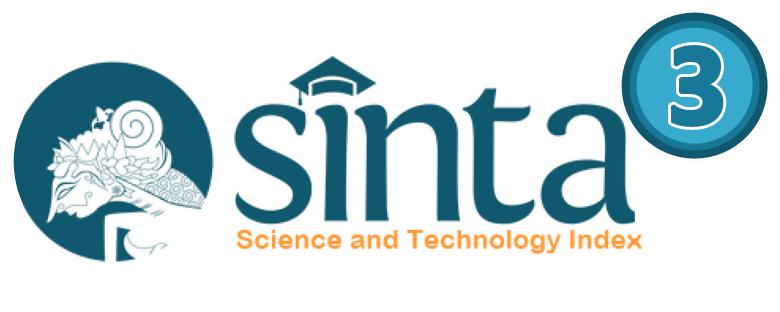Efektivitas Penggunaan E-Modul Berbasis Case Method Terhadap Kemampuan Berpikir Kritis
Abstract
The research aims to analyze the effectiveness of using case method-based e-modules on students' critical thinking abilities in Income Tax Management courses. This research is a quasi-experimental research with a pretest-posttest control group research design. The sample for this research consisted of students from the Tax Management Study Program who were enrolled in two Income Tax Management classes, with a total of 54 students. This research was conducted at the Faculty of Economics, Padang State University. The learning model used is the Case Method using the Case Method-based Tax E-Module media, which has been developed previously. The research results show that the use of the case method-based taxation e-module is effective in improving students' critical thinking skills.
Full Text:
PDFReferences
Ariadila, S.N., Silalahi Y. F. N., Fadiyah, F. N., Jamaludin, U., Setiawan, S., (2023). Analisis Pentingnya Keterampilan Berpikir Kritis Terhadap Pembelajaran Bagi Siswa: Jurnal Ilmiah Wahana Pendidikan, 9 (20), 664-669. https://doi.org/10.5281/zenodo.8436970
Arikunto. 2015. Prosedur Penelitian Suatu Pendekatan Praktik, Jakarta: Rineka. Cipta
Beghetto R. & Kaufman J.C. Toward a broader conception of creativity. Psychology of Aesthetics, Creativity and the Arts, 2007, vol. 1, no 2, pp. 73—79.
Craft, A. (2003). The Limits of Creativity in Education: Dilemmas for Educator. British Journal of Educational Studies. Volume 51. No. 2 (Jun. 2003). pp. 113-127.
Hamalik, O. (2014). Proses Belajar Mengajar. Jakarta: PT Bumi Aksara.
Haylock, D. (1997). Recognizing mathematical creativity in schoolchildren. ZDM Volume 29 (June 1997) Number 3. Electronic Edition ISSN 1615-679X. Retrieved August 6, 2002, from http://www.fiz.karlsruhe.de/fiz/publications/zdm
Hakak, S., Noor, N.F.M., Ayub, M.N., Aff al, H., Hussin, N., & Imran, M. (2019). Cloud-assisted gamifi cation for education and learning–Recent advances and challenges. Computers & Electrical Engineering, 74, 22-34. DOI: 10.1016/j.compeleceng.2019.01.002.
Idol, L., & Jones, B. F. (1991). Educational Values and Cognitive Instruction : Implications for Reform (1st Ed). Routledge. https://doi.org/ https://doi.org/ 10.4324/9781315044392
Isaksen, S. G. (2003). CPS: Linking creativity and problem solving. Retrieved August 22, 2004, from www.cpsb.com
Hutahaean, L., dkk. (2019). Pemanfaatan E-Modul Interaktif Sebagai Media Pembelajaran Di Era Digital. Prosiding Seminar Nasional Teknologi Pendidikan Pascasarjana, 298-305
Krishnan, A., Rabinowitz, M., Ziminsky, A., Scott, S. M., & Chretien, K. C. (2019). Addressing Race, Culture, and Structural Inequality in Medical Education: A Guide for Revising Teaching Cases. Academic Medicine, 94 (4). https://doi.org/10.1097/ACM.0000000000002589
Krutetskii, V.A. (1976). The psychology of mathematical abilities in schoolchildren.
Krulik, S., & Rudnick, J.A., (1999). Innovative tasks to improve critical and creative thinking skills. In Lee V. Stiff & Frances R Curcio (Eds). from Developing Mathematical reasoning in Grades K-12 (pp.138-145). Reston, Virginia: The National Council of Teachers of Mathematics
Lumsdaine, E., & Lumsdine, M.(1995). Creative problem solving: Thinking skills for a changing world. Singapore: McGraw-Hill
Muijs, D., & Reynolds, D. (2017). Effective Teaching: Evidence and Practice; SAGE: Los Ángeles, CA, USA.
Muijs, D., Kyriakides, L., Van der Werf, G., Creemers, B., Timperley, H., & Earl, L. (2014). State of the Art—Teacher Effectiveness and Professional Learning. Sch. Eff. Sch. Improv., 25, 231–256
Prasetyo, M.T., (2020). Modul Elektronik Sebagai Media Pembelajaran Daring di Masa Pandemi: ICO EDUSHA, Konferensi Internasional Manajemen Pendidikan dan Ekonomi Syariah, 134-138. E-ISSN : 2775-930X, https://prosiding.stainim.ac.id
Rohmawati, A. (2015). Efektivitas Pembelajaran. Jurnal Pendidikan Usia Dini, 9 (1).
Rosidah, CT. (2021). Team Based Project dan Case Method Sebagai Strategi Pengembangan Keterampilan Mengembangkan Pembelajaran Mahasiswa. Jurnal Kajian Pendidikan Mengajar, 7(2)
Sadiman, A. (2014). Media Pendidikan Pengertian Pengembangan dan Pemanfaatannya. Jakarta: Rajawali Pers.
Sugiyono. (2016). Metode Penelitian Kuantitatif, Kualitatif dan R&D, Cetakan ke-24. Bandung: Alfabeta
Slameto. (2010). Belajar dan Faktor-faktor yang Mempengaruhinya. Jakarta: PT Rineka Cipta.
Seidel, T., & Shavelson, R. J. (2007). Teaching effectiveness research in the past decade: The role of theory and research design in disentangling meta-analysis results. Review of educational research, 77(4), 454-499.
Touretzky, D., Gardner-McCune, C., Martin, F., & Seehorn, D. (2019). Envisioning AI for K-12: What Should Every Child Know about AI?. Proceedings of the AAAI Conference on Artifi cial Intelligence, 33, 9795-9799). DOI: 10.1609/aaai.v33i01.33019795.
Xi, N., & Hamari, J. (2019). Does gamifi cation satisfy needs? A study on the relationship between gamifi cation features and intrinsic need satisfaction. International Journal of Information Management, 46, 210-221. DOI: 10.1016/j.ijinfomgt.2018.12.002.
Yulianto, D. & Nugraheni, A. S. (2021). Efektivitas Pembelajaran Daring dalam Pembelajaran Bahasa Indonesia. DECODE: Jurnal Pendidikan Teknologi Informasi, 1(1), 33-42. DOI: http://dx.doi.org/10.51454/decode.v1i1.5
DOI: http://dx.doi.org/10.24036/jmpe.v6i4.15400


